List of Australian Reptiles: Fascinating Creatures Down Under
Welcome to our compilation of Australian reptiles, complete with captivating images and intriguing facts. This section is part of our comprehensive guide on reptiles, showcasing the unique and diverse reptilian life found in Australia.
Australia, although the smallest continent, boasts a vast and varied landscape, making it a haven for a wide range of reptiles. From its arid deserts to lush rainforests, this country offers diverse habitats that support an abundance of reptilian species.
On this page, we present some of the most renowned reptiles that call Australia home.
Introduction
Australia’s wildlife is renowned worldwide for its remarkable diversity and, let’s not forget, its reputation for being home to some of the world’s most dangerous creatures!
No list of Australian reptiles would be complete without highlighting a selection of lethal species. Here, we showcase the awe-inspiring saltwater crocodile, the largest living reptile globally, and the inland taipan, recognized as the most venomous snake on the planet!
However, it’s important to note that only a fraction of Australia’s reptiles pose a threat to humans. Species like the intriguing thorny devil and the enchanting frilled lizard are equally captivating, without evoking the same fear.
Now, let’s dive into the mesmerizing world of Australian reptiles…
Reptiles of Australia
(Note: If your favorite Australian reptile is not listed, feel free to mention it in the comments, and we might even include it in our compilation!)
Australian Crocodiles
Crocodiles belong to the Crocodilia order and are large aquatic reptiles that primarily reside in water. These fearsome ambush predators are equipped with powerful jaws lined with rows of teeth.
1. Freshwater Crocodile
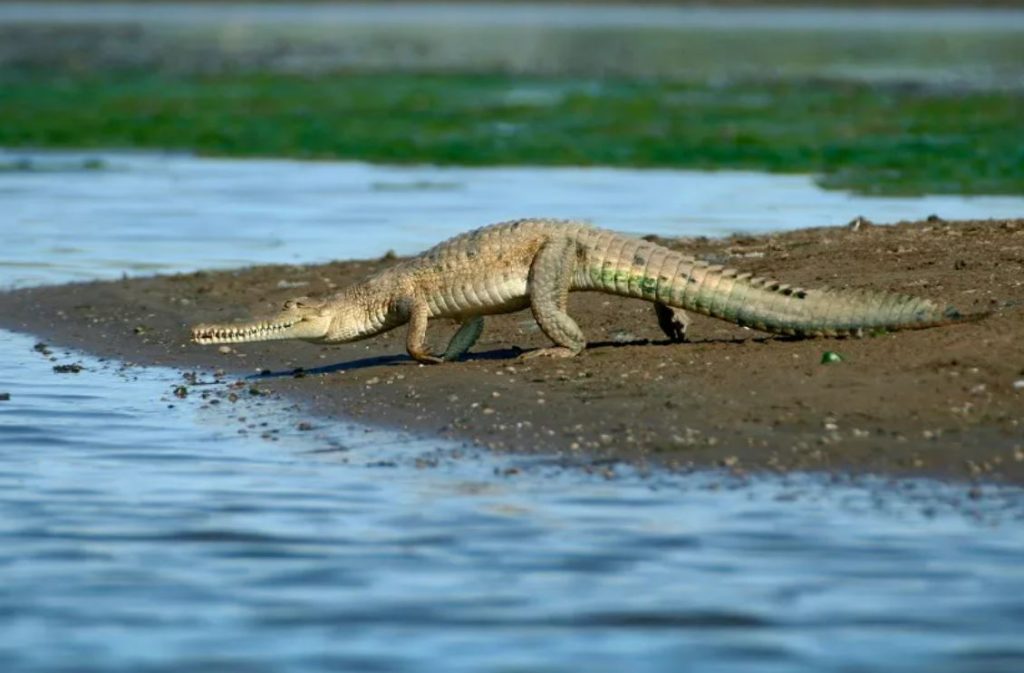
- Scientific Name: Crocodylus johnsoni
- Conservation Status: Least Concern
The freshwater crocodile, a relatively small species, reaches lengths of around 3 meters (9.8 feet) for large males. Both males and females have a grey/olive-brown coloration with dark patches.
Endemic to northern Australia, this species can be found in permanent billabongs, swamps, and rivers within otherwise dry regions. The freshwater crocodile lays eggs in nests but does not tend to them during incubation. Interestingly, when the young crocodiles call out from their eggs, a female crocodile, not necessarily the mother, aids in their hatching and sometimes even transports them to the water in her mouth.
2. Saltwater Crocodile

- Scientific Name: Crocodylus porosus
- Conservation Status: Least Concern
Known as the “salty” in Australia, the saltwater crocodile reigns not only as the largest crocodile in the country but also as the largest living reptile worldwide, often exceeding lengths of 6 meters (19.7 feet).
Distinguished by its wide snout, robust body, and fewer scutes on its neck compared to other species, the saltwater crocodile displays a range of colors from grey to nearly black, with most individuals exhibiting a dark green hue.
Found in estuaries, river systems, and swamps of northern Australia, this species is also present in several Southeast Asian countries and territories. It possesses the ability to undertake long journeys by sea.
Male saltwater crocodiles are territorial and less social compared to other crocodile species. Females lay hard-shelled eggs, guarding both the nest and hatchlings.
Australian Lizards
Lizards, like snakes, belong to the Squamata order, which encompasses a greater number of species than any other reptilian order combined.
1. Common Bluetongue
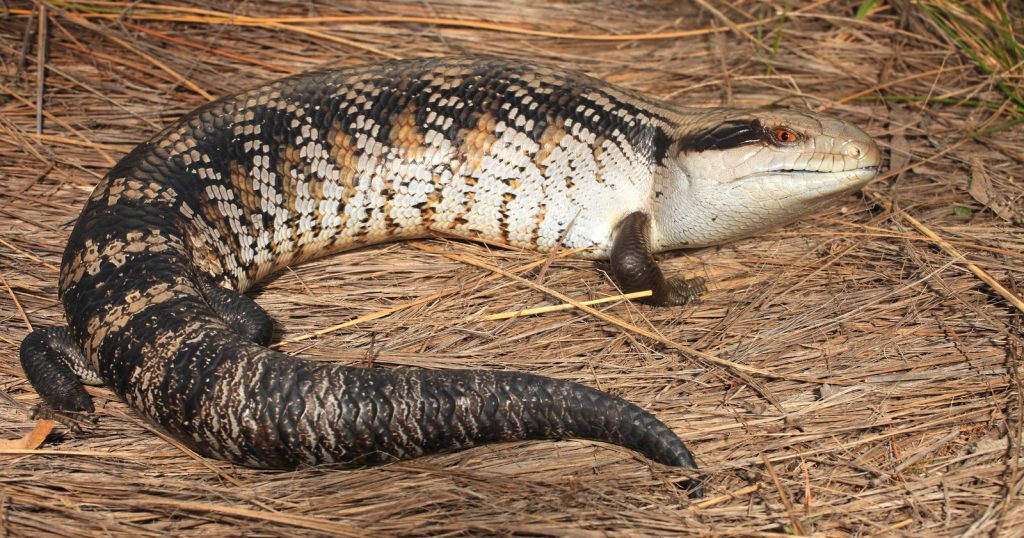
- Scientific Name: Tiliqua scincoides
- Conservation Status: Least Concern
Also known as the Australian blue-tongued skink, the common bluetongue is a sizable skink species with smooth scales, a robust body, and short legs. Its banded pattern features darker stripes on a pale background.
As its name suggests, this lizard exhibits a vibrant blue tongue, which it reveals as a threat display. The common bluetongue is ovoviviparous, meaning the eggs develop and hatch inside the female’s body, and she gives birth to live young.
2. Frilled Lizard

- Scientific Name: Chlamydosaurus kingii
- Conservation Status: Least Concern
Sporting a distinctive appearance, the frilled lizard possesses a large neck flap of skin that it raises like an umbrella when threatened. This brightly-colored skin creates the illusion of a larger size, aiming to deter or startle potential predators. The frilled lizard’s gray to orange-brown coloration serves as effective camouflage, often found perched on tree trunks. It can even walk bipedally, using only its hind legs.
Feeding on insects and small vertebrates, this species employs its frill for courtship rituals as well. Fascinatingly, this reptile has adapted to its arboreal habitat, using its unique features to thrive in its environment.
3. Gould’s Monitor
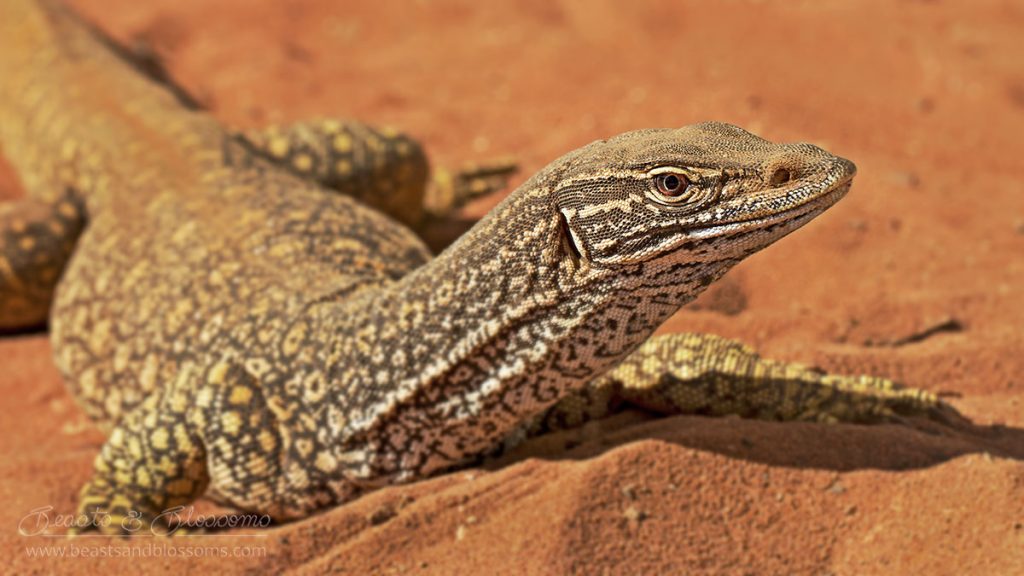
- Scientific Name: Varanus gouldii
- Conservation Status: Unassessed
Gould’s monitor, also known as the sand goanna or sand monitor, is a large monitor lizard. With a long neck, powerful limbs, and clawed digits, this reptile can reach lengths of up to 140 cm (4.6 ft.).
Displaying yellow-brown skin adorned with dark markings, Gould’s monitor digs burrows and seeks shelter in rock crevices and hollow trees. It can be found throughout various regions in Australia, hunting a range of small animals and occasionally scavenging carrion.
4. Thorny Devil

- Scientific Name: Moloch horridus
- Conservation Status: Least Concern
Also called the thorny dragon, this reptile is distributed across much of Australia, excluding the northernmost regions and parts of the eastern coast. Thriving in dry habitats, the thorny devil possesses remarkable adaptations for this arid lifestyle.
One fascinating feature is its ability to collect moisture from the air, channeling it towards its mouth through grooves between the spines on its body. The thorny devil boasts several defensive adaptations, including fearsome spines that deter predators from swallowing it and a false head located behind its real head.
Feeding mainly on ants, this intriguing creature can consume up to 5,000 ants in a single day, showcasing its specialized diet and unique survival strategies.
5. Tree Dtella
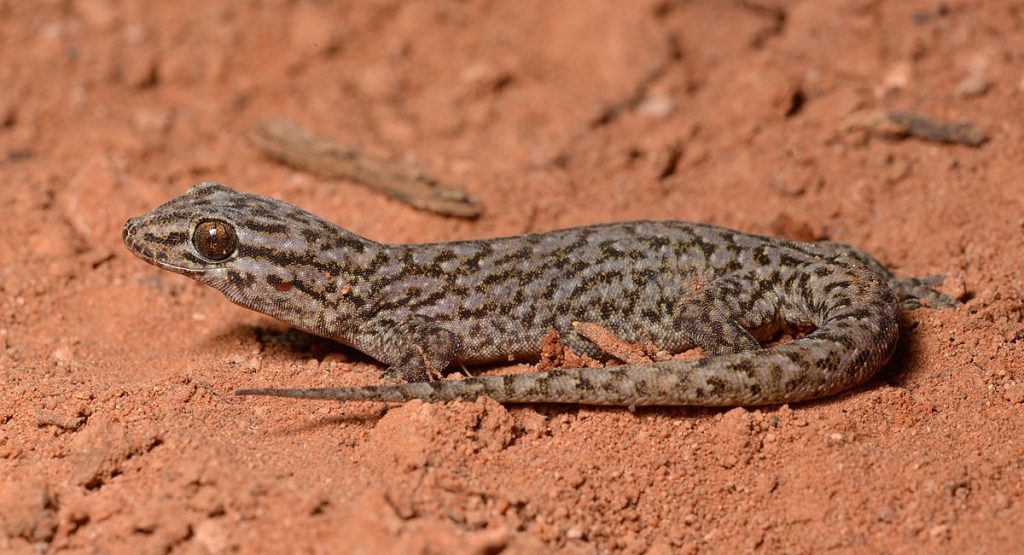
- Scientific Name: Gehyra variegata
- Conservation Status: Least Concern
Also known as the variegated dtella, this species of gecko primarily inhabits the southwest region of Australia, thriving in arid habitats. With a body length of around 12.5 cm (5 in.), including a tail comprising more than half of its length, the tree dtella is often found beneath tree bark or in crevices.
Sporting a flat, grey-brown body adorned with darker markings, this gecko employs large pads on its digits to aid in climbing, enabling it to navigate its arboreal habitat with ease.
6. Common Scaly-Foot

- Scientific Name: Pygopus lepidopodus
- Conservation Status: Unassessed
Despite its serpent-like appearance, the common scaly-foot is, in fact, a legless lizard.
Reaching lengths of up to 80 cm (31.5 in), the common scaly-foot exhibits a pale brown or grey coloration. It lacks front legs, and its hind legs are merely scaly flaps, which give the lizard its name.
Endemic to Australia, particularly the southern regions, the common scaly-foot prefers habitats such as heaths and grasslands. It preys on insects and spiders, showcasing its adept hunting skills in these environments.
Interestingly, the common scaly-foot is also kept as a pet by reptile enthusiasts, who are captivated by its unique appearance and behavior.
Australian Snakes
Australia is renowned for its collection of highly venomous snakes. However, these fascinating reptiles typically only pose a threat when provoked.
1. Eastern Brown Snake

Scientific Name: Pseudonaja textilis
Conservation Status: Unassessed
The eastern brown snake holds the title of the world’s second most venomous snake, responsible for 60% of fatal snake bites in Australia. (The inland taipan, another Australian snake, holds the title for the world’s most venomous snake.)
Also known as the common brown snake, this formidable reptile inhabits eastern and central Australia, including New Guinea. Ranging in length up to 2 meters (7 ft), the eastern brown snake showcases a color range from grey-brown to almost black, often with yellow undersides adorned with orange or brown markings.
This species thrives in diverse habitats such as scrublands and grasslands, benefiting from extensive land clearing for agriculture, which has led to an increase in rodent populations, its main prey.
2. Northern Death Adder
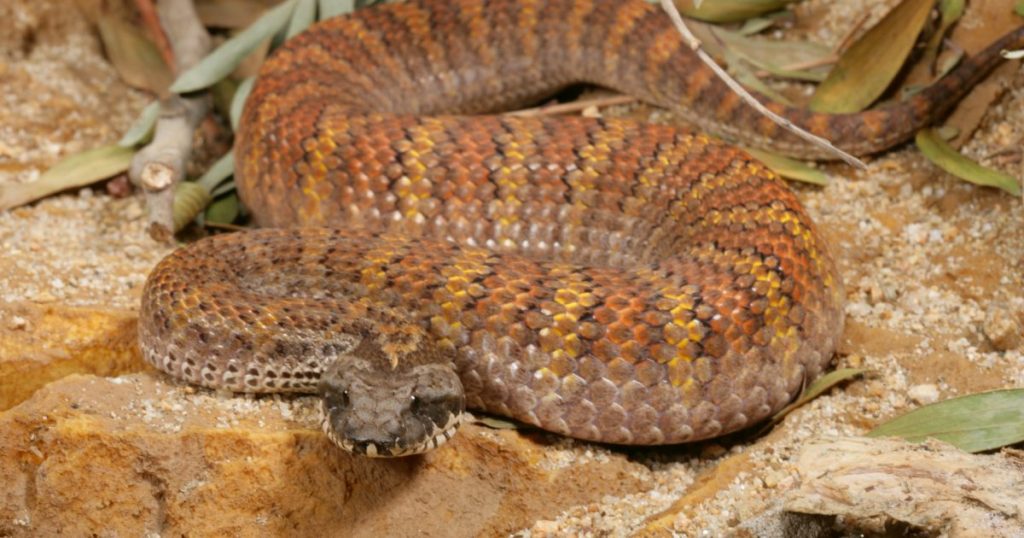
Scientific Name: Acanthophis praelongus
Conservation Status: Unassessed
Belonging to a group of venomous snakes known as death adders, the northern death adder is a relatively short and thick species. It resides in the northern regions of Australia, finding refuge among leaf litter in forests and woodlands.
Featuring a large head, slender neck, and robust body, the northern death adder displays a brown or red-brown coloration with pale stripes. Its long fangs deliver potent venom that can be fatal to humans.
3. Olive Sea Snake

Scientific Name: Aipysurus laevis
Conservation Status: Least Concern
As one of the sea snakes found in Australian waters, the olive sea snake possesses a specially adapted flattened tail for efficient swimming. Although it lacks gills and must come to the surface to breathe, it thrives in its aquatic lifestyle.
Covered in smooth scales and displaying colors ranging from purple to green-brown, this snake resides in coral reefs, often seeking shelter within the coral when not actively hunting. Light-sensing organs in its tail aid in determining its concealment level.
Feeding on fish and crustaceans, the olive sea snake hunts primarily at night. While its venom is highly toxic, capable of causing severe harm to humans, encounters with humans are rare.
4. Scrub Python
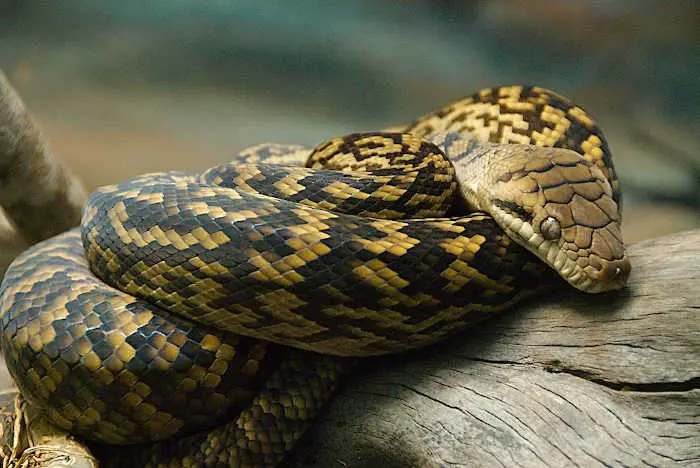
Scientific Name: Morelia amethistina
Conservation Status: Least Concern
Reigning as the largest snake in Australia and ranking among the top six largest snakes globally, the scrub python, also known as the amethystine python, is an impressive species. It can reach lengths of up to 8.5 meters (27.9 ft), although most individuals are slightly shorter.
Displaying a grey-brown body with blotchy markings of darker and lighter shades, this python exhibits expertise in tree climbing and spends a significant portion of its life among the branches. With a large head and a robust body, it can consume relatively large prey, including birds, bats, and marsupials, using constriction to subdue its victims. The scrub python’s diet consists mainly of small to mid-sized vertebrates.
5. Inland Taipan

Scientific Name: Oxyuranus microlepidotus
Conservation Status: Unassessed
Considered the world’s most venomous snake, the inland taipan belongs to the taipan species, which includes the coastal taipan and the central ranges taipan. With a color range from olive-green to dark brown, the inland taipan’s appearance changes over the course of a year. Its body is adorned with darker markings, while the head often appears darker than the rest of the body. On average, this species measures around 1.8 meters (5.9 ft) in length, although longer specimens can be found.
Endemic to the dry regions of Queensland and South Australia, the inland taipan is a specialist hunter of mammals, primarily targeting rats and mice. Its venom is specifically adapted to be highly effective against mammals.
Despite its fearsome reputation, the inland taipan rarely attacks humans unless provoked, and encounters with this elusive snake are extremely rare.
To delve deeper into the world of the inland taipan, feel free to explore our Inland Taipan Facts page.
Australian Turtles
Turtles belong to the reptilian order Testudines, characterized by their protective shells. They can be classified into two main groups: Pleurodira, or side-necked turtles, and Cryptodira, which withdraw their heads with a backward motion.
1. Eastern Long-Necked Turtle
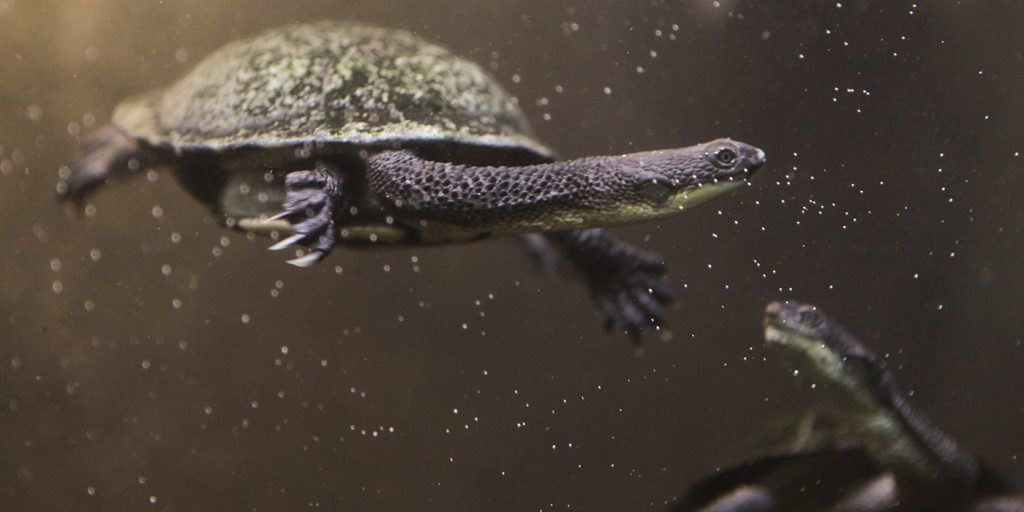
- Scientific Name: Chelodina longicollis
- Conservation Status: Least Concern
Also known as the eastern snake-necked turtle, this species earned its name due to its long neck, which measures as long as its shell. The shell itself is approximately the size of a dinner plate, displaying a brown-black coloration. The plastron, located on the turtle’s underside, is cream-yellow.
Inhabiting slow-moving bodies of water, the eastern long-necked turtle is often observed basking on sandbanks and logs. It feeds on a variety of small animals, including insects, amphibians, fish, and crustaceans. When threatened, it can emit an unpleasant-smelling fluid from its musk glands as a defense mechanism.
2. Western Swamp Turtle
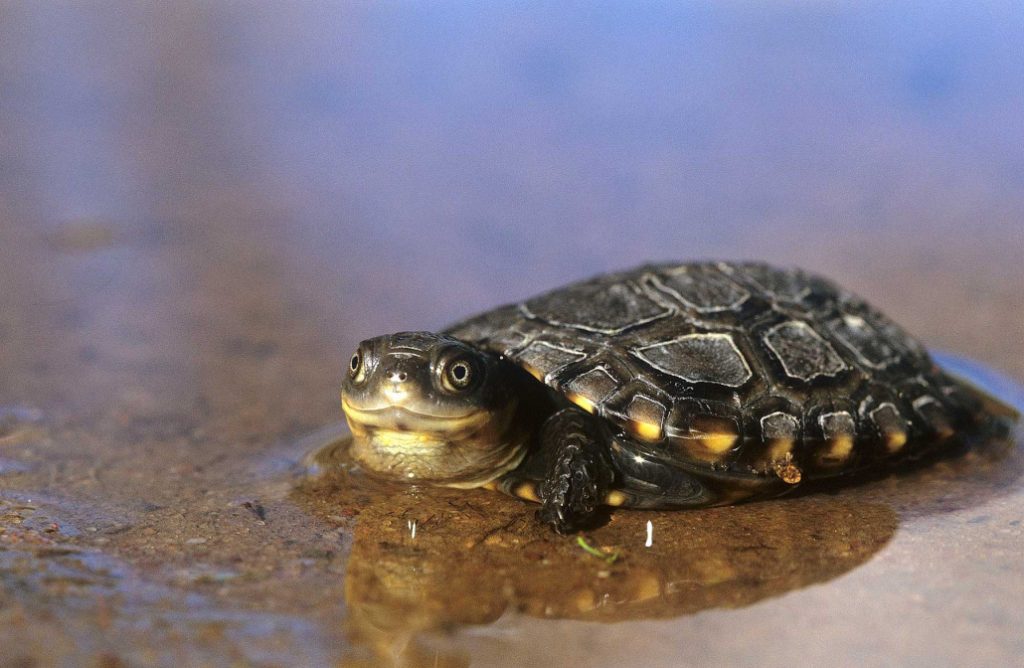
- Scientific Name: Pseudemydura umbrina
- Conservation Status: Critically Endangered
The western swamp turtle holds the distinction of being one of Australia’s rarest reptiles. Its habitat is confined to a small region near Perth in Western Australia, much of which has been lost due to human development for urbanization and agriculture.
This turtle boasts a brown, square-shaped carapace (top shell) measuring approximately 15 cm (6 in) in length. It resides in an area prone to seasonal drought, burying itself in mud and entering a state of inactivity during the dry season. Once the rains return, it becomes active again.
Australian Reptiles List: Conclusion
We hope you’ve enjoyed discovering the remarkable Australian reptiles showcased here. However, please note that this list represents only a fraction of the reptilian inhabitants found in Australia. We will continue to expand and update this list regularly. If your favorite Australian reptile is missing, feel free to share it in the comments, and we may even include it just for you!
We appreciate your enthusiasm for learning more about Australian reptiles! If you have any specific questions or would like further information on a particular species, feel free to ask. Our goal is to provide you with a comprehensive understanding of the unique reptilian biodiversity found in Australia.
It’s worth mentioning that Australia is home to many other intriguing reptiles beyond those listed here. From pythons and geckos to dragons and turtles, the country’s diverse ecosystems harbor a plethora of captivating species waiting to be explored.
Remember, as you delve deeper into the world of reptiles, it’s important to respect their habitats and understand the proper precautions to take when encountering them in the wild. Observing these creatures from a safe distance allows us to appreciate their beauty and ecological significance while ensuring their well-being and our own safety.
We hope this compilation of Australian reptiles has sparked your curiosity and encouraged you to explore further. If you have any more questions or require additional information, please don’t hesitate to ask. Happy reptile exploration!
